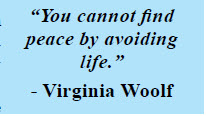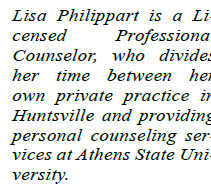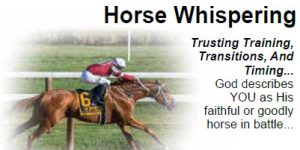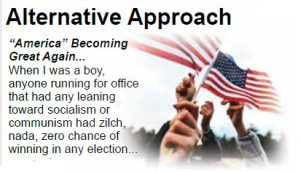 By: Lisa Philippart
By: Lisa Philippart
One of my areas of expertise is anxiety. I am a master at it! I have used my own struggles and challenges with anxiety, stress, worry, fear, apprehension, concern, unease … whatever you want to call it, as examples to help my clients. It has taken me a while to figure out that overcoming my anxiety has required learning to face the situations which I would normally avoid. Dialectical Behavior Therapy (DBT) calls it Opposite Action. Opposite Action is an emotion regulation skill that is a deliberate attempt to act opposite of your emotion urge. For example, if you feel sad, rather than isolating yourself from others, you would choose to get out and do something to keep yourself busy. My favorite strategy involves an acronym to help you remember the steps. FACE stands for Find, Action, Coping, Evaluate. Let’s take a look at each of these steps in detail.
 If you tend to be an anxious person, you may have noticed that you get caught up in the cycle of anxiety. This cycle begins with anxious thoughts and feelings. The cognitive behavior therapist would attempt to convince you that your thoughts or beliefs initiate your feelings. In other words, how you think about someone or something determines how you feel about that someone or something. For example, if I see a dog running toward me, my belief will determine how I feel about the dog. If I have been bitten by a dog before, my thought would be that this dog will bite me and, therefore, I will be afraid. If this dog reminds me of my own dog, my thought would be that this dog is friendly and I will be happy. When I experience anxiety, my go-to action is to avoid the situation or person. This is when Opposite Action can step in to divert this process. Otherwise, I go from anxiety to avoidance to leading a restricted life, which makes me feel even worse. And feeling worse make me anxious! And round we go again.
If you tend to be an anxious person, you may have noticed that you get caught up in the cycle of anxiety. This cycle begins with anxious thoughts and feelings. The cognitive behavior therapist would attempt to convince you that your thoughts or beliefs initiate your feelings. In other words, how you think about someone or something determines how you feel about that someone or something. For example, if I see a dog running toward me, my belief will determine how I feel about the dog. If I have been bitten by a dog before, my thought would be that this dog will bite me and, therefore, I will be afraid. If this dog reminds me of my own dog, my thought would be that this dog is friendly and I will be happy. When I experience anxiety, my go-to action is to avoid the situation or person. This is when Opposite Action can step in to divert this process. Otherwise, I go from anxiety to avoidance to leading a restricted life, which makes me feel even worse. And feeling worse make me anxious! And round we go again.
 By using FACE, I have been able to work toward overcoming some of my fears and tendencies to hide and escape. F stands for find. Find and identify what you would like to be able to FACE, rather than avoid. Begin by writing a list of several targets to face, then choose one that is not too distressing. For example, I would like to be able to feel less anxious when presenting to a group of people. Fear of public speaking is common. And if you are like me, you go through all the “what ifs”…..what if I trip on the way to the podium, what if I stumble over my words, what if someone asks me a question I can’t answer, etc. A stands for action. Decide on the steps you need to take. I find it helpful to break it down into manageable chunks, like steps on a ladder. Start with step one on the bottom rung and list the clear movements needed to reach the top of the ladder. In my example, before a presentation, I put together a detailed plan for what I want to say and how I want to say it…and then I practice my presentation over and over. Each rung is a step in the process. C stands for coping. Write down all your coping strategies and use those that are going to be the most useful for that situation. What are your coping skills? It helps to have a master list of skills and ideas. In my example of public speaking, one of my most effective coping strategies is using aromatherapy to ground me and calm me down before I present. And finally, E stands for evaluate. After you have taken all the steps, review how things went. What worked? What didn’t go so well? What could you do differently next time?
By using FACE, I have been able to work toward overcoming some of my fears and tendencies to hide and escape. F stands for find. Find and identify what you would like to be able to FACE, rather than avoid. Begin by writing a list of several targets to face, then choose one that is not too distressing. For example, I would like to be able to feel less anxious when presenting to a group of people. Fear of public speaking is common. And if you are like me, you go through all the “what ifs”…..what if I trip on the way to the podium, what if I stumble over my words, what if someone asks me a question I can’t answer, etc. A stands for action. Decide on the steps you need to take. I find it helpful to break it down into manageable chunks, like steps on a ladder. Start with step one on the bottom rung and list the clear movements needed to reach the top of the ladder. In my example, before a presentation, I put together a detailed plan for what I want to say and how I want to say it…and then I practice my presentation over and over. Each rung is a step in the process. C stands for coping. Write down all your coping strategies and use those that are going to be the most useful for that situation. What are your coping skills? It helps to have a master list of skills and ideas. In my example of public speaking, one of my most effective coping strategies is using aromatherapy to ground me and calm me down before I present. And finally, E stands for evaluate. After you have taken all the steps, review how things went. What worked? What didn’t go so well? What could you do differently next time?
The goal of FACE is to learn to overcome your anxiety by decreasing your tendency to avoid, leading to a more full and purposeful life. Give it a try!
P.S. May is Mental Health Awareness Month. What are you doing to take care of your mental and emotional health?
By: Lisa Philippart – Licensed Professional Counselor









 June 20, 2025
June 20, 2025



